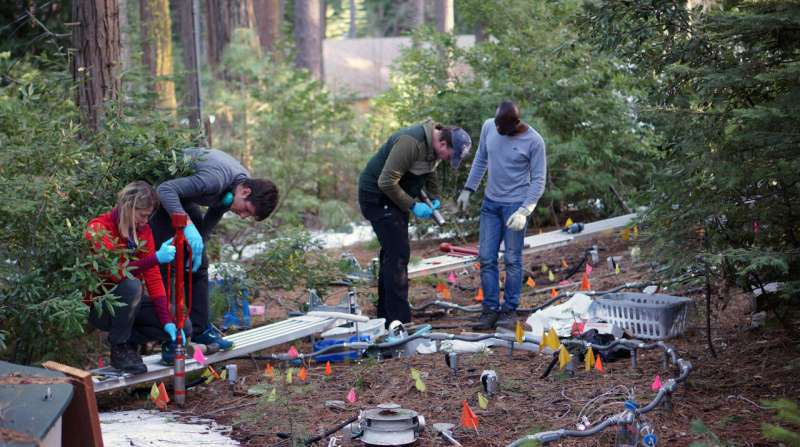Climate change releases carbon stocks deep underground: Study

Subsoils are the largest storehouses for carbon, as well as one of the most important sources of carbon dioxide in the atmosphere. Global warming is accelerating the decomposition of soil humus. It is also affecting the waxy and woody compounds which help plants store carbon in their leaves and roots and were previously thought to be stable. These are the findings of a study conducted by researchers from the University of Zurich’s Department of Geography in the Sierra Nevada National Forest.
The work is published in the journal Nature Geoscience.
Around a quarter of the world’s carbon emissions are sequestered by forests, grasslands and pasture land. Plants use photosynthesis to store carbon in their cell walls and in the soil. Around half the carbon in soil is located in the deeper layers, more than 20 centimeters deep. But even these lower layers are heating up due to climate change.
Loss of vital carbon sinks
The warming climate is causing significant loss of the organic compounds that help plants store carbon in their leaves and roots. Previously, scientists had assumed that complex polymers, which have a more stable molecular structure, were able to withstand natural decomposition for longer and thus store carbon in the soil.
However, the UZH-led study has now shown that the compound lignin, which gives plants their stiffness, was reduced by 17%, while waxy compounds called cutin and suberin, which protect plants from pathogens and are found in leaves, stems and roots, were down 30%. Even pyrogenic carbon, the organic compound that remains following a forest fire, was present in significantly reduced amounts.
The experiments were carried out in the forests of the Sierra Nevada in California. The one-meter deep soil was artificially heated up by 4°C over the course of 4.5 years, following daily and seasonal cycles. This amount of warming is consistent with projections through the end of the century in a business-as-usual climate scenario.
Consequences for the use of soils to tackle global warming
These findings have major significance for one of the key strategies in the fight against global warming, namely relying on soils and forests as natural carbon sinks. As part of this strategy, crop plants with particularly deep roots and cork-rich biomass are being developed. “Until now it was assumed that this would keep CO2 locked in the ground,” says Michael W. Schmidt, professor of geography and last author of the study.
“But our results show that all the constituents of soil humus will decrease at the same rate, simple chemical compounds and polymers alike. If these initial observations are confirmed in longer-term field experiments, the consequences are alarming.” If the forest floor loses humus on a large scale and carbon is thus released as CO2, the pace of global warming will be accelerated even more. “Our goal must be to stop emissions at the source,” says Schmidt.
More information:
Cyrill U. Zosso et al, Rapid loss of complex polymers and pyrogenic carbon in subsoils under whole-soil warming, Nature Geoscience (2023). DOI: 10.1038/s41561-023-01142-1
Citation:
Climate change releases carbon stocks deep underground: Study (2023, June 14)
retrieved 14 June 2023
from https://phys.org/news/2023-06-climate-carbon-stocks-deep-underground.html
This document is subject to copyright. Apart from any fair dealing for the purpose of private study or research, no
part may be reproduced without the written permission. The content is provided for information purposes only.
For all the latest Science News Click Here
For the latest news and updates, follow us on Google News.

